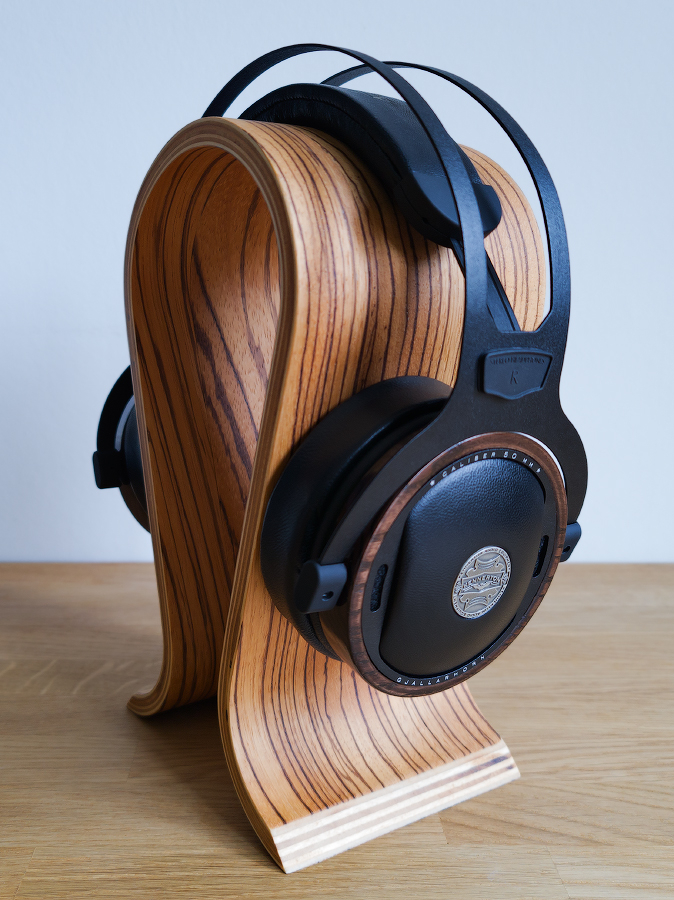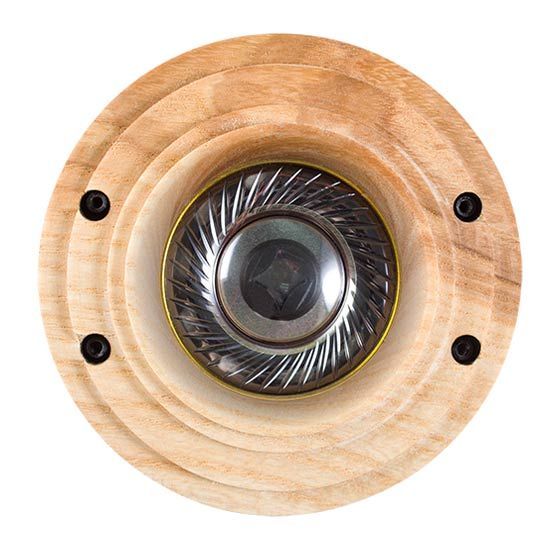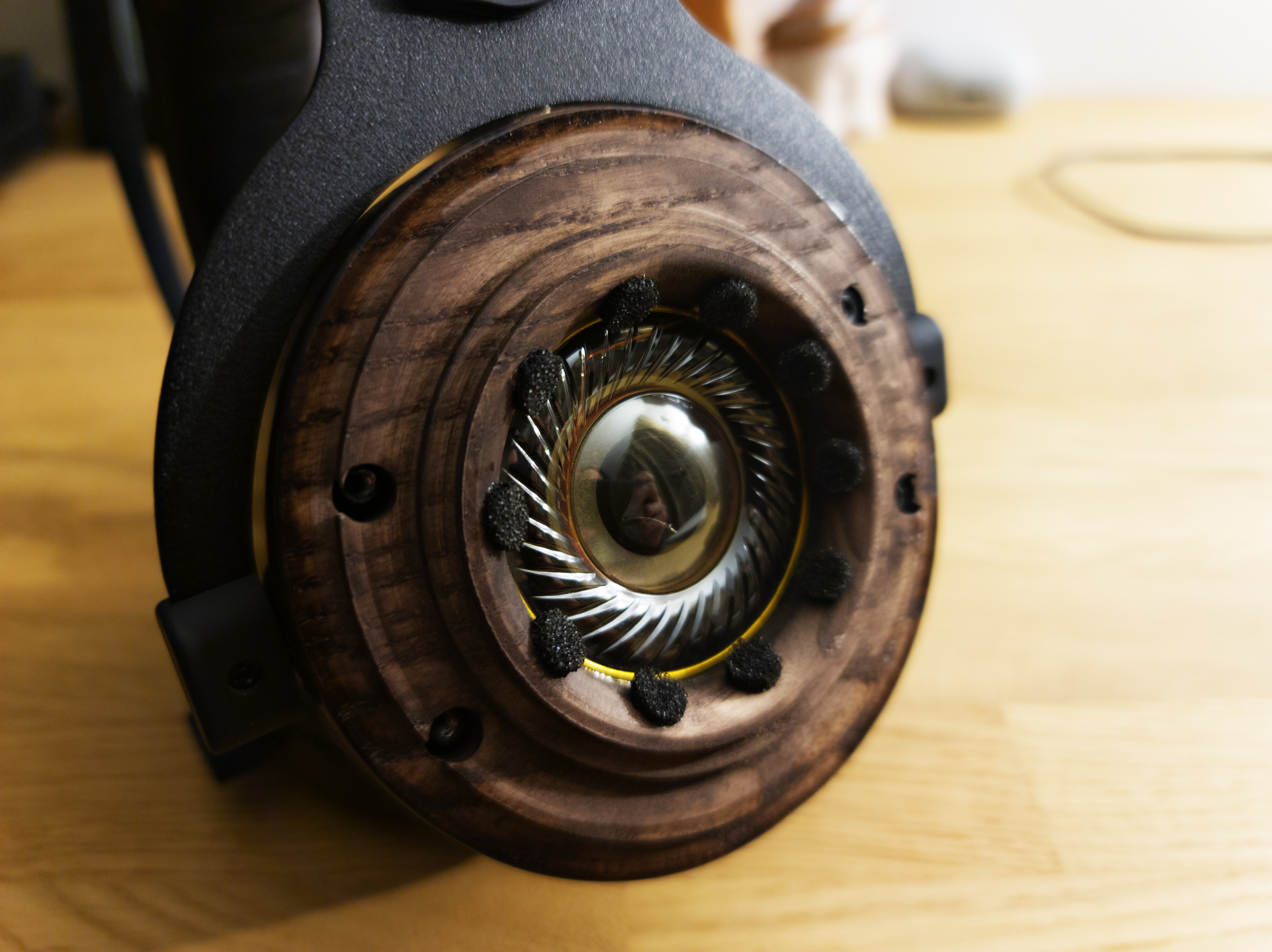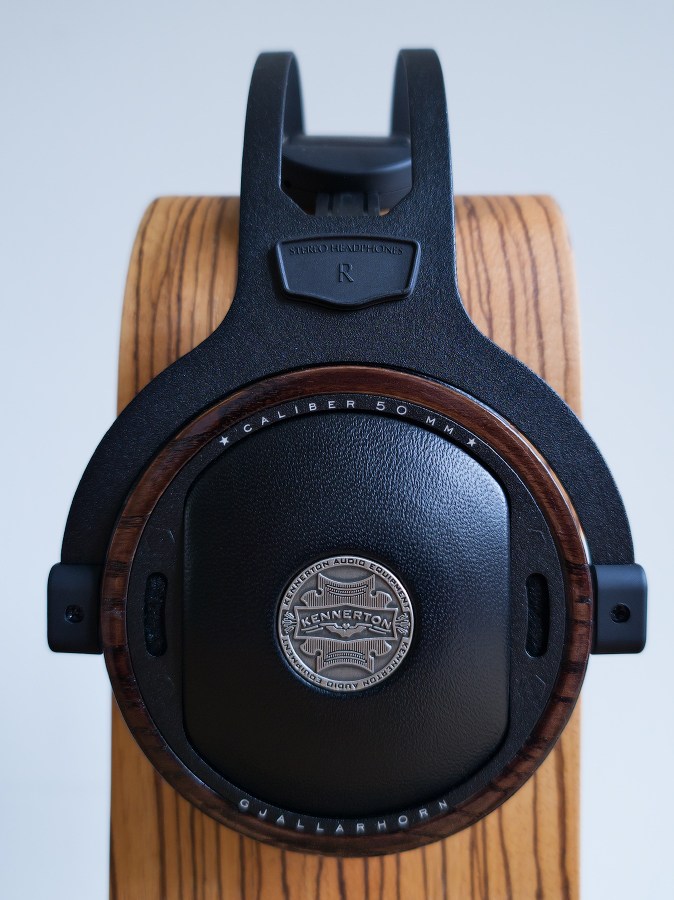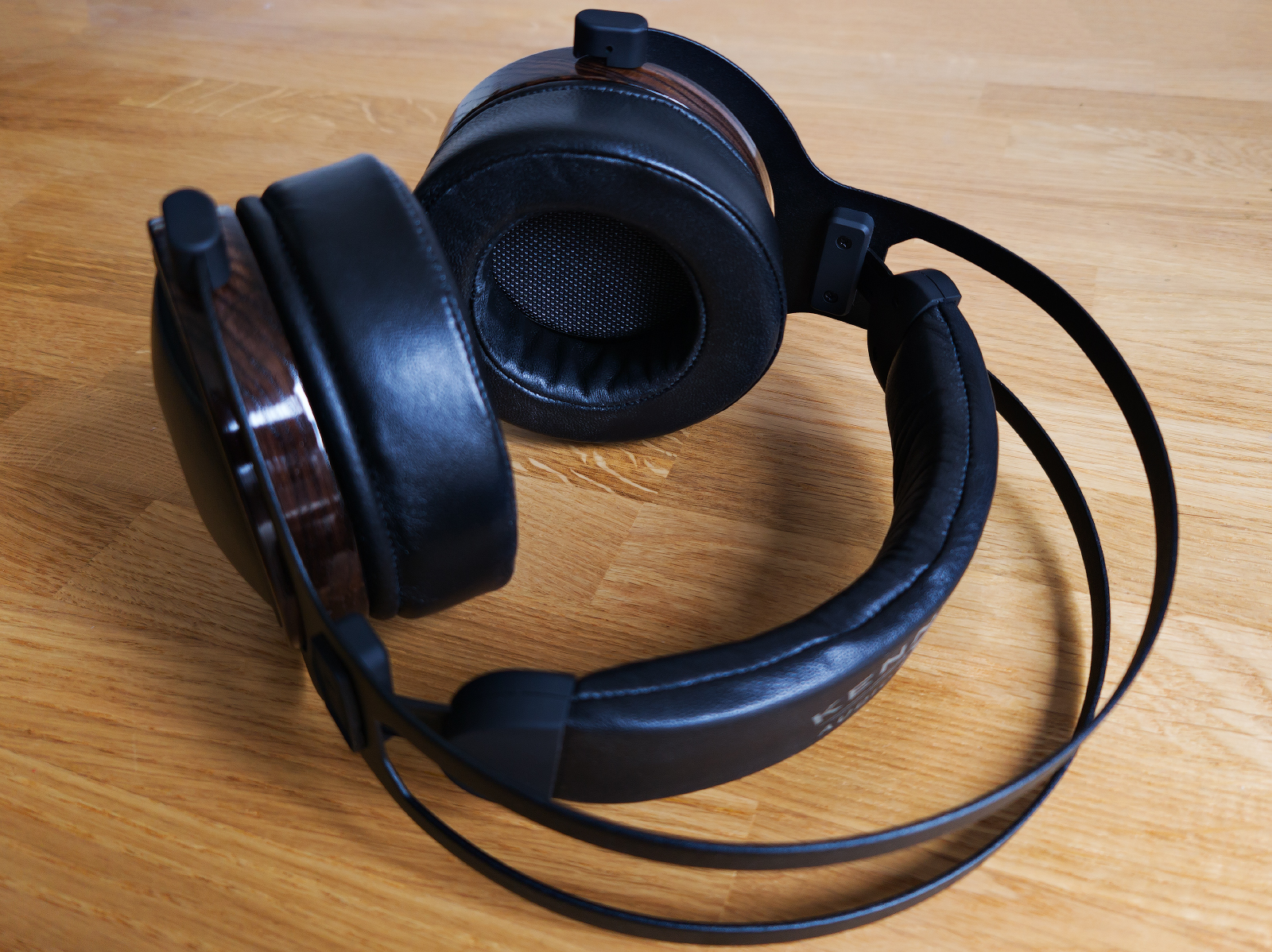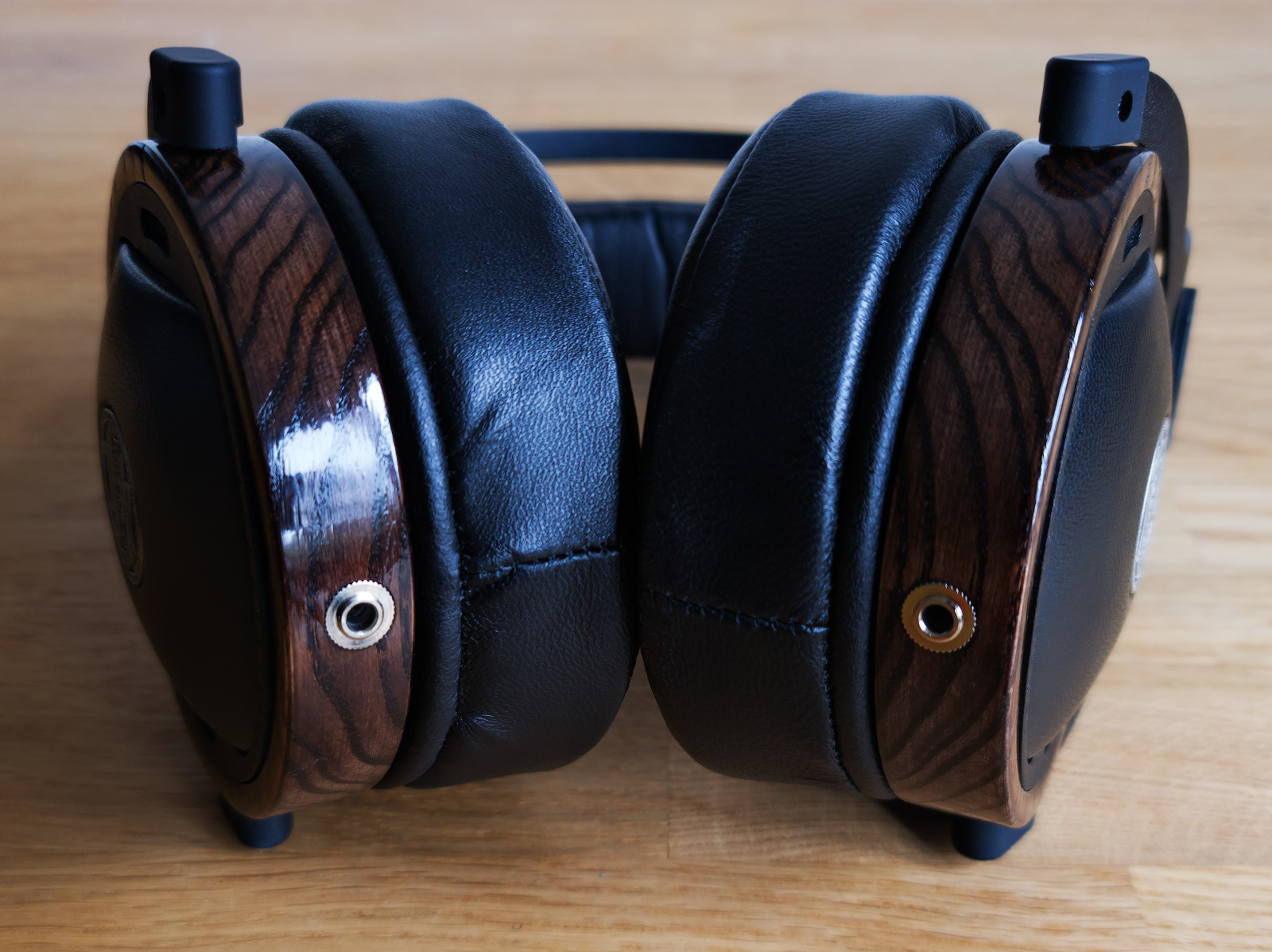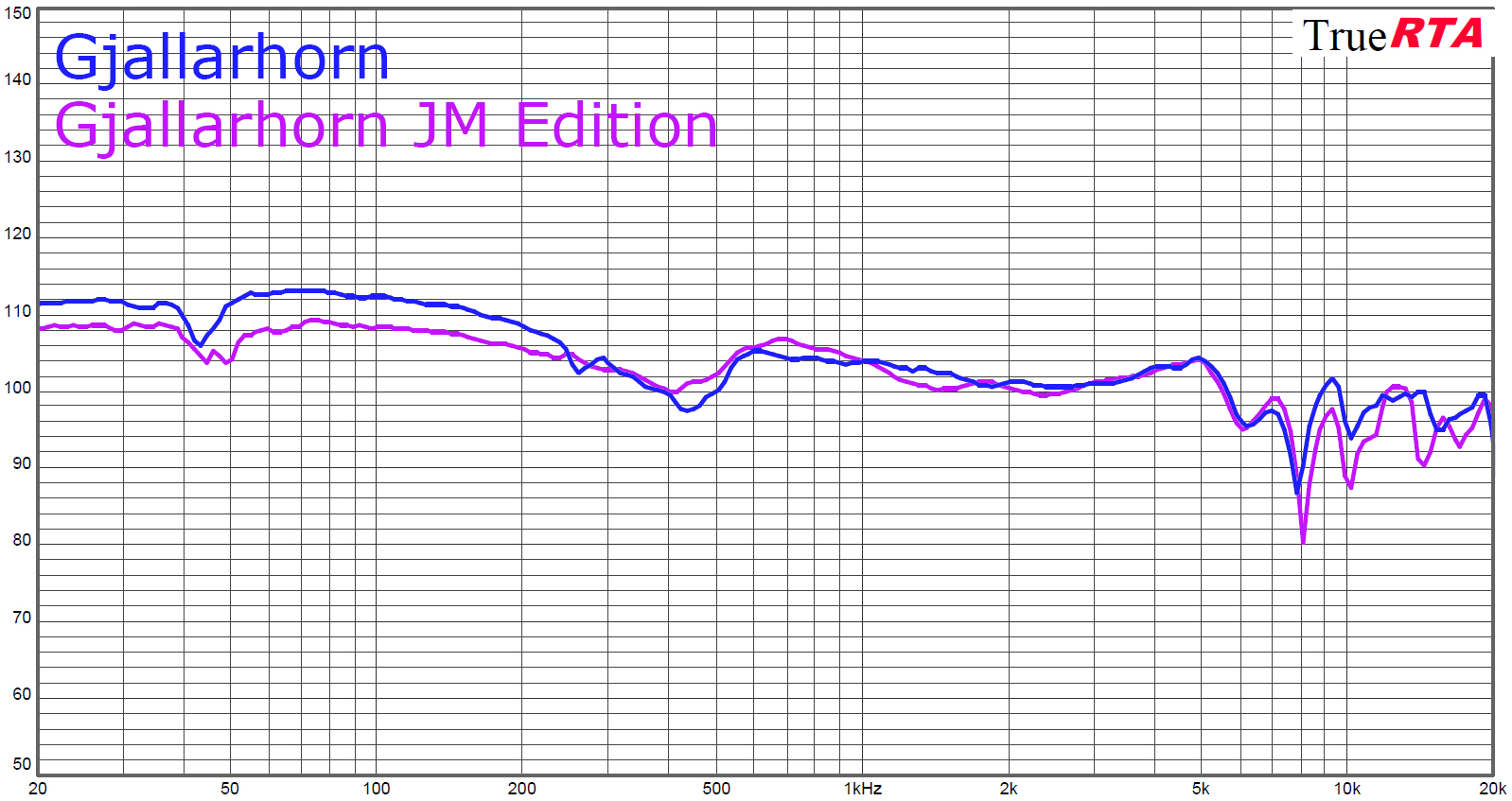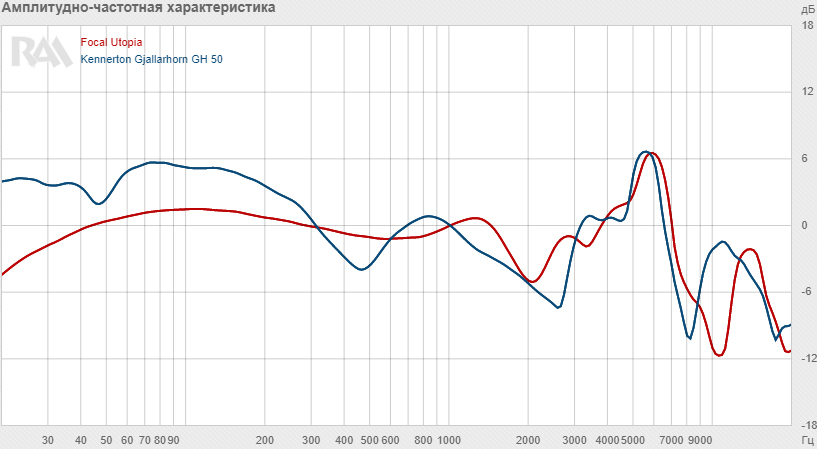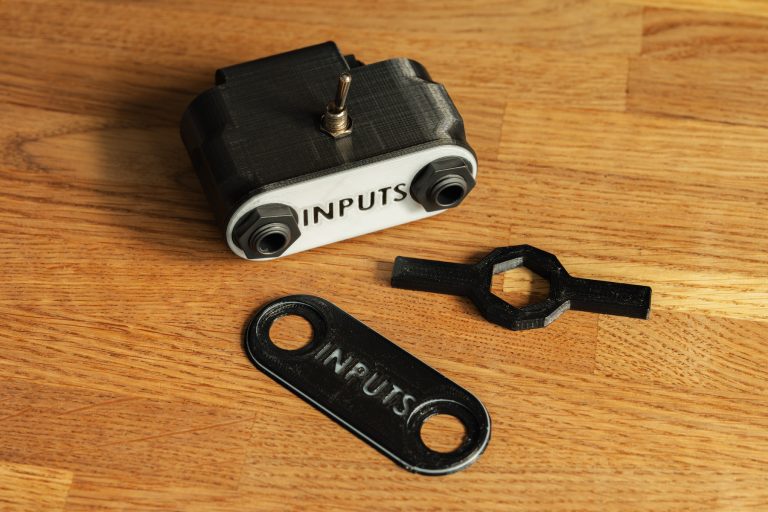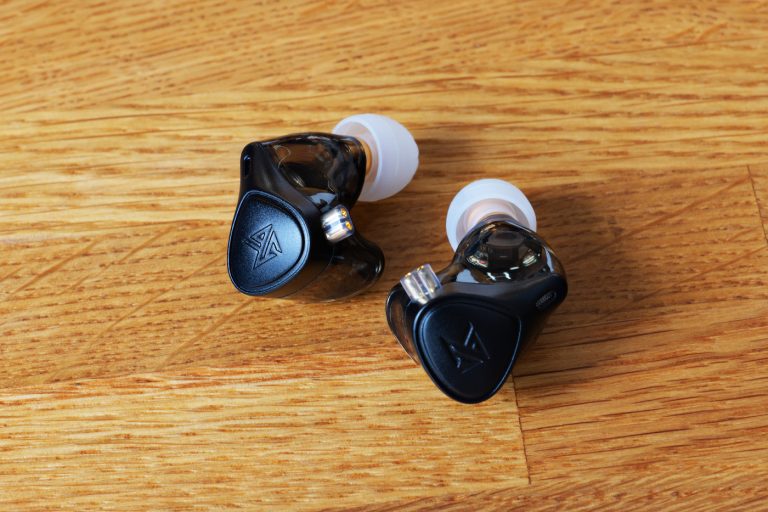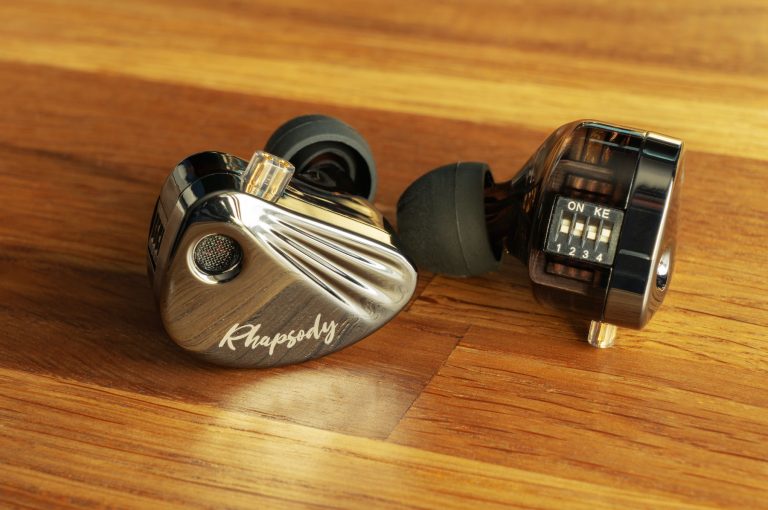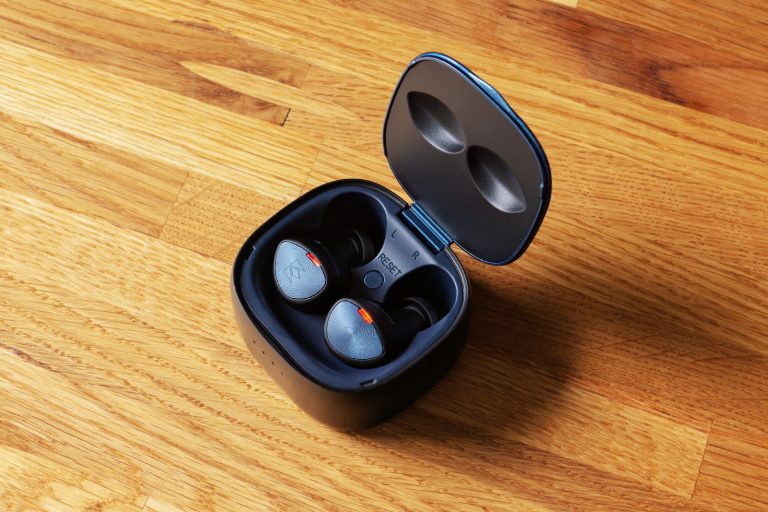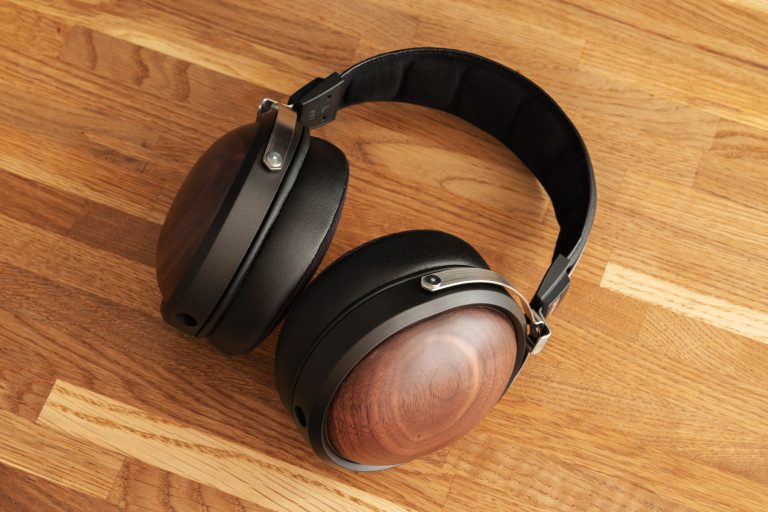Kennerton Gjallarhorn JM Edition Headphones Review
The plague is spreading across the planet, and we’re safe and sound at home. Going out to cinema, concerts, exhibitions isn’t what matters anymore and is even quite unsafe for health. It’s all about ourselves that matters now and its importance only increases.
Therefore, today I’m going to review one of the rare types of good closed-back headphones: Kennerton Gjallarhorn JM Edition.
All images are clickable to enlarge.
If you aren’t familiar with Kennerton yet, I recommend reading this interview first.
A simple thing people often don’t like about open-back headphones is that they’re open-back. If you’re listening to the music, then everyone in the same room (or even in the same apartment) with you is listening to that music. The Gjallarhorn, however, aren’t like that. Moreover, these aren’t just good closed-back headphones, but unique headphones, since this model has horn earcups, as well as speakers with graphene membranes.
Let me remind you that the horn design is used in acoustics to increase sound pressure and dynamics, and also to reduce the speaker’s requirements for amplification power. And while in ‘full-sized’ acoustic systems, there are horns used from the very moment of such systems invention (in good old gramophones, for example), this technology is almost never used in headphones.
JM Edition
After the release, one of the head-fi.org users — John Massaria — modified his headphones. He glued felt circles to the inner surface of the horn, and also completely covered one bass port on each of the earcups. Just go and read about it yourselves here. John liked the result, so he contacted the manufacturer and told them about the discovery. Kennerton, in their turn, reproduced the experiment, appreciated the result and decided to release this modified version of Gjallarhorn with the JM Edition prefix (hereinafter — Gjallarhorn JME).
Here’s what the insides of the Gjallarhorn JM Edition earcup look like:
The modification affected the sound indeed, and I’m going to talk about it below. Kind of spoiler for you: it affected, and quite radically.
Design and build
I usually don’t review the design and the aesthetic, since it’s basically not about the review subject, but about the reviewer’s likings and their personal preferences. Here, however, I feel like changing the usual strategy: from my point of view, the Gjallarhorn JME are the most beautiful and aesthetically engineered Kennerton headphones.
The wooden lacquered earcups are ennobled with leather inserts, and a metal plate with the ‘Kennerton Audio Equipment’ engraving on the edge is placed in the center of the outside part of each earpiece. In the center, there’s a stylized ‘Kennerton’ inscription and the bat-like company’s logo. On the sides of each earcup, there are 2 bass port holes cushioned with thick felt.
As in other 2020 Kennerton models, everything is neat and precisely fitted together. Manufacturing culture — check. In terms of design related solutions, the Gjallarhorn JME are somewhere around Wodan: a soft self-adjusting headband, a metal frame that provides exactly the required pressure against your head, thin wooden earcups with leather earpads.
The earpads are thick, but not too soft. You can’t turn the earcups vertically, and the earpads have the same thickness all around. I’d also note that the headphones deliver the sound (and especially the bass) that is quite dependent on how tightly the earpads are pressed against the user’s ears. Therefore, take some time to find the correct positioning of the headphones against your ears, as well as the correct angle of the earcup to get the ‘real’ sound as conceived by the Gjallarhorn JME manufacturer.
The headphones weigh 406 grams. Ergonomically, the Gjallarhorn JME turned out to be a very successful model. These allow you to use them all day pretty comfortably. The sound leaks outside only slightly, though the background noise reduction (from the user’s position) is pretty poor — as in semi-open models . Again, sound insulation, as well as whether you’ll have your ears sweating, depends heavily on the fit of the headphones on your head. At room temperature of 23.5 degrees Celsius, I felt my ears getting too hot only after 3-4 hours of continuous listening.
The cable is 2 meters long — it’s black and enclosed in a fabric braid. To connect the cable to the headphones, 3.5 mm connectors are provided. The earcups are completely symmetrical (although the left and right earcups are clearly labeled just in case), and the connectors are positioned exactly in the middle under the cups and oriented vertically down. The connectors are quite short themselves, so they don’t touch even high collars or scarves and don’t cause any discomfort when using.
The headphones look and feel reliable, you can literally pull them off your head or smash them against the table without damaging them in any way.
The Gjallarhorn JME are supplied with the same case as Wodan; for details, refer to the corresponding review.
Specifications and the required sound source
- Acoustic design: closed-back.
- Driver type: dynamic.
- Impedance: 33 Ohms.
- Sensitivity: 116 dB.
The above figures indicate that the headphones should easily rock when used with almost any portable, and even better so with any stationary sound source. The RME ADI-2 DAC fs allows the Gjallarhorn JME to play loud enough even at -35 dBr in Lo-Power mode.
Listening experience
According to the manufacturer’s recommendation, the headphones were warmed up for almost 120 hours before listening. The listening time was about 70 hours in total.
Let me remind you that we’re talking about closed-back headphones here, that is, the Kennerton engineers had to solve some significantly more complex problems of sound tuning than in the case of open-back models. The usual problems in closed-back models are a mumbling raised bass and a lack of width and depth of the sound stage.
That’s why I was rather surprised but happy to discover that the Gjallarhorn JME deliver a perfectly built sound stage, and also reproduce the low-frequency component of the music as it is.
The sound stage is unexpectedly wide in general and especially given a closed-back model. The instruments are precisely positioned from left to right horizontally. The feeling of distance to one or another instrument or singer in terms of proximity is transmitted, on the contrary, pretty indistinctly: the sound sources seem to be located either very close or very far from the listener. However, all three-dimensional stereo effects sound very impressive, for example, in such tracks as Window by HVOB, Becoming Insane by Infected Mushroom or Shrine by Jeff Beck.
There’s also bass, the beautiful clear and fast bass without any smudging or blurring. As for me, this range is reproduced more accurately and generally somehow more correctly than in the same Wodan headphones. And that’s given the open-back design of the Wodan and the closed-back one of the Gjallarhorn JME. Dulcet by Clubroot: the bass and the subbass don’t cause any pressure on the ears and don’t loose texture. Grannos by Eluveitie: the drums sound clearly even given the fast tempo of the track. And in Catvrix track by the same Eluveitie, the subbass at the beginning of the track and at 1:47 is perfectly audible, but sound pretty comfortably, without unpleasant pressure on the ears.
I’d note that on audiophile forums, some think that in regular unmodified Gjallarhorn, the bass sounds too massive; this can also be seen from the measurements below. At the same time, I can’t say the bass of the Gjallarhorn JM Edition is either accentuated or in some other way highlighted. Given the tuning of other frequencies, the bass sounds completely naturally and in exactly the right amount. Subjectively, the Wodan bass feels accentuated to a noticeably greater extent.
In short, the bass, especially given the closed-back design, is delivered just fine.
Upper-frequency range. It’s almost perfect in the lower and middle sections in the middle of upper frequencies. The Gjallarhorn JME have such an extremely good virtual sound stage due to the natural tuning of the upper frequencies. The headphones don’t make this range any less noticeable or reduce it, but on the contrary, they deliver it in full, without sugarcoating poorly recorded tracks.
In the upper part of the upper frequencies, there’s a peak that causes an unpleasant creaking side tone on some of the music; the sound loses its ‘smoothness’ and unpleasantly grates on your ears. Here’s an example for you: the Marche slave by Tchaikovsky, its first part (Adagio con brio) performed by Karajan: due to the large dynamic range on really loud parts of the piece (for example, at 4:08), a strange rasp appears. Or try listening to Love by Cellar Darling: there’s a very unpleasant sparklish/itchyish sound when the vocals come in (0:26-0:36). This side sound is present in the track itself, but it sticks out even more due to uneven frequency response at the very top of the frequency spectrum.
Medium frequencies. It’s to this section of the frequency range that I’ll need to aim most of my criticism. The medium frequencies are very, very uneven: high-pitched human voices and other sounds of the similar frequency are heard as if from a distance. And the violins, cellos, alto saxophones give the impression of a low-frequency component removed from their sounding. The examples aren’t very far to seek: Inside by Avantasia (the soloist’s voice simply lacks volume and completeness), Medicine Man by Dorothy (the reduced voice reverb), The Burden Is Minve… Alone by Green Carnation (almost no reverb and echo from guitar plunkings).
It’s worth to note though that not any track makes the frequency response irregularities evident and/or uncomfortable to hear. If you don’t have an idea about what the track should ideally sound nor any experience of listening to it on more ‘smooth’ headphones, then in most cases the Gjallarhorn sound delivery style can be perceived as special style, and not as sound distortion. Or you may not hear it at all or give it no hell. For example, Evocation II by Eluveite sounds perfectly in its entirety, although the mid-frequencies range is largely involved in the track. The same can be said about Cold Gold by Larry Carlton & Robben Ford, where the slightly raised bass is more than appropriate, Distorted Angels by Archive, or even We Are Chaos by Marilyn Manson, which sounds even more impressive with such frequency response.
Well, to test myself, I’m going to check out the measurements.
First, let’s take a look at the SPL measurements of regular Gjallarhorn and Gjallarhorn JME. These measurements are provided by the manufacturer, no correction was applied.
Here’s what we see on the Gjallarhorn JME graphs:
- in the 20-300 Hz range, the difference is about 4 dB, the lower-frequencies range of Gjallarhorn JME is significantly pinned down;
- the 450 Hz dip is almost completely compensated: it’s 3 dB less;
- there is a small peak at 700 Hz;
- the 7 kHz section is raised by 2 dB compared to the regular model;
- starting from 8 kHz, the graph declines by 2 dB compared to the regular model;
- yep, there is a peak at 11 kHz.
The overall conclusion is the following: the Gjallarhorn JME sound significantly smoother compared to regular Gjallarhorn.
But how does the sound of these headphones compare to the sound of other models?
To be honest, I’m a bit sick of comparing the frequency response of all headphones with the Sennheiser HD800 specs, so today we’ll parallel the Gjallarhorn measurements with the Focal Utopia ones. Unfortunately, the Gjallarhorn JME aren’t available at RAA (as of yet?), so let’s compare the Focal Utopia to the regular Gjallarhorn.
Let me remind you that the Focal Utopia setting is very close to neutral.
As always, I’m using the Reference Audio Analyzer measurements.
Decrease the 20-300 range by 4 dB down, remove the 450 Hz dip, lower everything above 8 kHz by 2 dB, leave the peak at 11 kHz, and you’ll get an approximate Gjallarhorn JME frequency response.
What you may want to pay attention to.
- The 3000-9000 ranges are very similar despite almost five times the difference in the cost of headphones and different design: open-back in Utopia and closed-back in Gjallarhorn. The form of the Gjallarhorn JME frequency response would be almost exactly the same, only located slightly lower.
- The 300-3000 range is uneven, with a dip with a minimum at about 2800 Hz. Let me remind you that the 450 Hz dip in Gjallarhorn JME is compensated. The dip at 2800 Hz is about 6 dB (given that Utopia itself has a dip of 2 dB there). It’s this drop in the mid-frequencies range that for me explains both the unconvincing sound stage depth and the funny sound delivery of some instruments and voices. In fact, my suggestions are easily confirmed by using the equalizer. If we raise this section, the sound immediately becomes much more complete, the sound stage space acquires a precisely perceived depth, and the sounds of the upper-frequencies range seem to move a little closer to the listener.
- The 11 kHz peak of the Gjallarhorn JME will be slightly more pronounced.
I’d also point out an idea expressed by Kennerton in an interview that Gjallarhorn will make excellent gaming headphones. For non-competitive games — for sure, but as for online shooters such as Escape from Tarkov, Apex Legends, PUBG, then most of the audio information here is reproduced at the upper section of the mid-frequencies range with a dip. And Gjallarhorn JME doesn’t fix this problem. Therefore, the sounds of footsteps on some materials, shots from some types of weapons are significantly muffled, and the distance to those sounds is transmitted poorly by these headphones.
Wrapping up
The Gjallarhorn JME is a rare representative of the closed-back headphones class made for audiophiles. Their absolute advantages include high comfort of use, excellent build quality and reliability, low sound source power saves, pleasant setting of lower-frequencies and upper-frequencies ranges, closed-back design.
As for the disadvantages, it’s the uneven mid-frequencies delivery.
Which leads us to the generalizing idea that these are ‘smooth’ but still somewhat ‘subjective’ (that is, not anyone would like the sounding) headphones with a frequency response, which, greatly simplifying, can be described as tending to take the V-shape. Who’ll like the Gjallarhorn JME? Those who either welcome such tuning in its original form, or are ready to adjust it with an equalizer. The more so because it’s quite easy to fix the dip at 2800 Hz and crush the peak at 11 kHz using the good old ADI-2 DAC.
As for me personally, deciding between, for example, Wodan and Gjallarhorn JME, I’d choose Gjallarhorn JME because of the significantly less compressed upper-frequencies range and more ‘correct’ bass reproduction, despite the irregularities in the middle of the frequency response. And even if Gjallarhorn JME wouldn’t be too helpful in music editing, you can always just listen to the music other guys created and have fun.
P.S. It turned out in the process of writing the review, that the earpads from iBasso SR-1 headphones fit perfectly in the Gjallarhorn. These (earpads) are made of a different material, have a noticeable bevel (that is, the speaker is located closer to the ear and positioned at an angle), and the additional PT1 earpads have quite generous perforation on them. Due to this, the sound of Gjallarhorn changes very significantly. As soon as I finish experimenting with these earpads, I’ll definitely add some findings to the post.
Like this review? You can support me on patreon.

